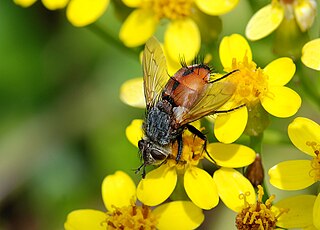Frank William Dux is a Canadian-American martial artist and fight choreographer. According to Dux, a ninjutsu expert named Senzo Tanaka trained him as a ninja when he was a teenager. He established his own school of ninjutsu called Dux Ryu Ninjutsu, and has said he won a secret martial arts tournament called the Kumite in 1975. His alleged victory at the Kumite served as the inspiration for the 1988 film Bloodsport starring Jean-Claude Van Damme. Dux's victory at the Kumite has been disputed, as has the existence of both the Kumite he described and Senzo Tanaka.

Bloodsport is a 1988 American martial arts sports action film directed by Newt Arnold and starring Jean-Claude Van Damme, Leah Ayres, Forest Whitaker, Donald Gibb, Roy Chiao and Bolo Yeung. The film centers on Frank Dux, a United States Army Captain and ninjutsu practitioner, who competes in an underground full-contact martial arts tournament called the Kumite in Hong Kong. Based on Dux's real-life claims the movie was marketed as a true story. It was one of Van Damme's first lead roles and showcased his abilities, launching his career as a mainstream action star.

Dux is Latin for "leader" and later for duke and its variant forms. During the Roman Republic and for the first centuries of the Roman Empire, dux could refer to anyone who commanded troops, both Roman generals and foreign leaders, but was not a formal military rank.

Hypena is a genus of moths in the family Erebidae. It was first described by Franz von Paula Schrank in 1802. These non-migratory moths overwinter as pupae and almost never estivate as adults.

The Diocese of Egypt was a diocese of the later Roman Empire, incorporating the provinces of Egypt and Cyrenaica. Its capital was at Alexandria, and its governor had the unique title of praefectus augustalis instead of the ordinary vicarius. The diocese was initially part of the Diocese of the East, but in ca. 380, it became a separate entity, which lasted until its territories were overrun by the Muslim conquest of Egypt in the 640s.
Agyrta is a Neotropical genus of moth in the subfamily Arctiinae.

Cosmosoma is a genus of tiger moths in the subfamily Arctiinae. The genus was erected by Jacob Hübner in 1823.

Cyana is a genus of moths in the family Erebidae. Species are well distributed in Africa, Madagascar, China, India, Sri Lanka, Myanmar, Sumatra, Java and Borneo. The genus was erected by Francis Walker in 1854.
Manru is an opera in three acts, music by Ignacy Jan Paderewski composed to the libretto by Alfred Nossig based on the novel A Hut Behind the Village (1854) by Józef Ignacy Kraszewski.

Citharizum was a town and fortress on the south arm of the Euphrates in the Roman province of Armenia III. It was a place of great strength which was built by the emperor Justinian and was the residence of one of the five prefects whom that emperor placed over Roman Armenia with the title of “Dux.”

Tachina is a genus of large flies in the family Tachinidae. There are approximately 600 species worldwide. Most have larvae that are parasitoids of Lepidopteran caterpillars.

Glyphodes is a genus of moths of the family Crambidae described by Achille Guenée in 1854.

Antaeotricha is a genus of moths. It is the largest genus in the subfamily Stenomatinae, numbering over 400 species in the Western Hemisphere.
Agyrta garleppi is a moth of the subfamily Arctiinae. It was described by Rothschild in 1912. It is found in Peru.
Agyrta porphyria is a moth of the subfamily Arctiinae. It was described by Pieter Cramer in 1782. It is found in Brazil (Para).

Odontiinae is a subfamily of moths of the family Crambidae. The subfamily was described by Achille Guenée in 1854.

The Syntomini are a tribe of moths in the family Erebidae. The tribe was erected by Gottlieb August Wilhelm Herrich-Schäffer in 1846.
Constantia or Konstantia was a town of some importance in the province Osrhoene in Mesopotamia, on the road between Nisibis and Carrhae, at no great distance from Edessa. It was, after his departure from Nisibis, the residence of the dux Mesopotamiae until the foundation of Dara. There is considerable variation in different authors in the way in which the name of this town is written and the names under which it is known, including: Constantia or Konstantia (Κωνσταντία), Constantina or Konstantina (Κωνσταντίνα), Antoninopolis, Nicephorium or Nikephorion (Νικηφόριον), Maximianopolis (Μαξιμιανούπολις), Constantinopolis in Osrhoene, Tella and Antiochia Arabis, Antiochia in Mesopotamia and Antiochia in Arabia.

Margaroniini is a tribe of the species-rich subfamily Spilomelinae in the pyraloid moth family Crambidae. The tribe was erected by Charles Swinhoe and Everard Charles Cotes in 1889, originally as family Margaronidae.












